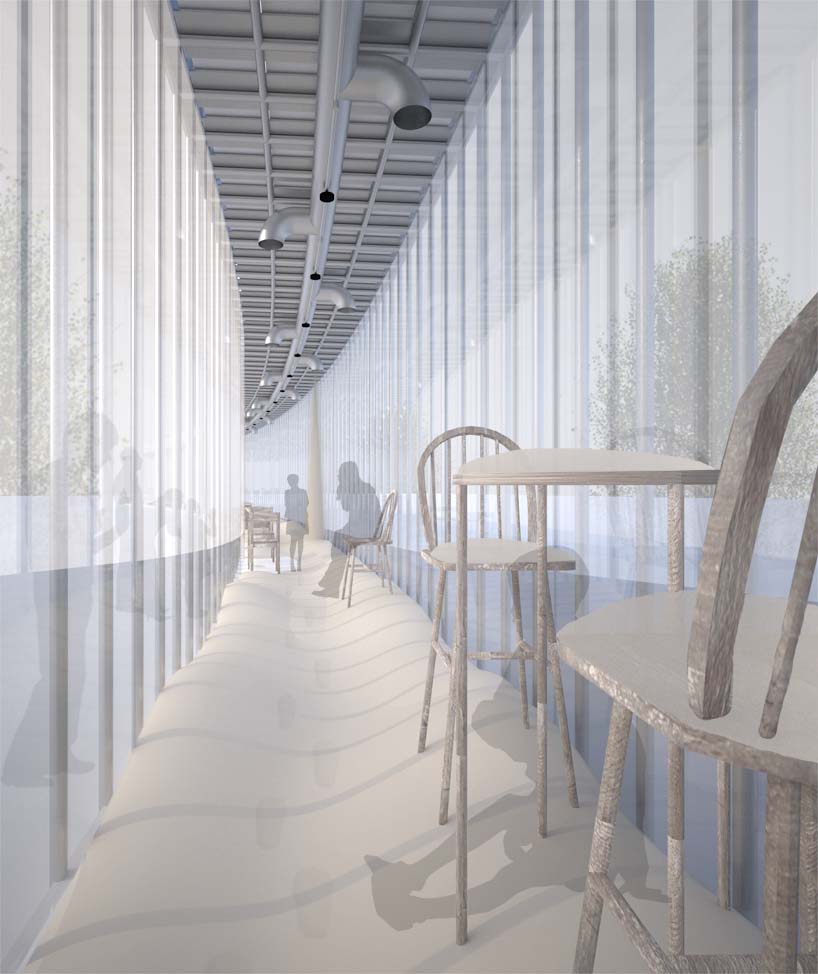
monument to the ages by studio_01 from japan
designer's own words:
Concept:
Sand accumulates, rain falls, wind blows, and the process repeats. Gradually, as millions of years pass, tiny particles change from sand to earth and then layers of rock. In a place where there is no longer any movement, where everything has become layered and rigid, the sand has created an archive of the motion in the plants and animals that once existed. The passage of time and the changing seasons create a record of what once was and what once moved.
"Monument to the Ages" takes this long process of nature, one that takes millions of years to create a few layers of the earth, and shrinks it with the use of technology to the span of just a few short days. People will be able to come and gather in the artificial environment where the climate is like the ever-changing seasons. As they walk, rest, and experience time as they like, the record of their existence and passage through the artificial environment. Through an architecture to create a system of an artificial nature, the motion of the many anonymous visitors gradually and unconsciously design a monument that is a direct result of their many personal experiences.
Construction and Methodology:
The artificial environment which is inherently tied to both the experience and design of the "Monument to the Ages" is one that is relatively easy to construct. Individual frame units, which are 1600mm x 1600mm in plan, are each created by typical temporary scaffolding and are filled with tanks of polymeric sand, pipes for water to wet the sand, and ductwork for the drying air. These individual units can be connected in series to match desired length or project budget. The polymeric sand, made of quartz, silica, and a chemical polymer which reacts with water to become hard, has a natural hardening time of 3 hours if in an inch thick layer; however, when spread in a thin layer and aided by a drying burst of air after wet, the hardening time can be greatly reduced. Each of these frame units are then enclosed by a strong, transparent polycarbonate sheet ("polygal"), which allows for visibility throughout the space.
The discharge of the three components, sand, air, and water, are controlled by passive infrared sensors which are placed one to each frame unit which observes the presence and movement of visitors in a 4 by 4 grid of 400mm square areas below. If the sensor sees that there is no one present below, sand falls periodically from each tank, dropping enough sand to add an additional 1.5mm layer to the floor directly below every 10 minutes (each tank on a slightly different starting schedule). The sand is then made wet by the water and dried by hot air is visitors still are not present. The amount of sand released provides that if there are no visitors present at all, all of the sand will be released from the tank, and the floor will rise a total of 500mm during the 5-day exhibition.
Placed throughout the environment are benches, chairs, and tables of different heights which will influence the movement of people as they walk through the space. Additionally, the varying heights of the furniture allows for them to be used comfortably at different stages of the exhibition as the height of the floor changes.
After the exhibition and the final hardening of the "Monument for the Ages", it can be relocated to a public park where it can enhance the park, providing new locations to sit and relax, as well as a new visual monument to the anonymous movement of those that came before.
Possibility:
For successful realization of the "Monument for the Ages", we plan to work in cooperation with professionals in environmental engineering, materials engineering, construction engineer, and digital programmers. Additionally, the use of ready-made and traditional materials such as the scaffolding tube frame, transparent polycarbonate wall ("polygal"), pipes for plumbing, ductwork, and polycarbonate tanks for sand allows not only for low cost, but also high rate of recyclability.
interior view of “Monument to the Ages” during exhibition phase 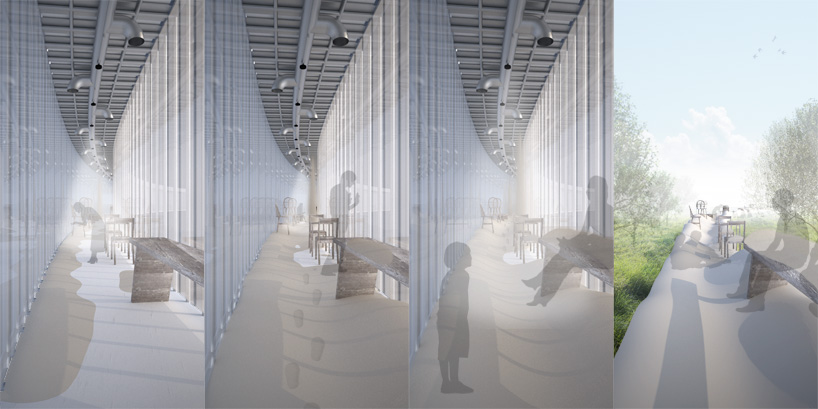 time lapse of “Monument to the Ages” as floor level responds to visitors from exhibition to relocation
time lapse of “Monument to the Ages” as floor level responds to visitors from exhibition to relocation 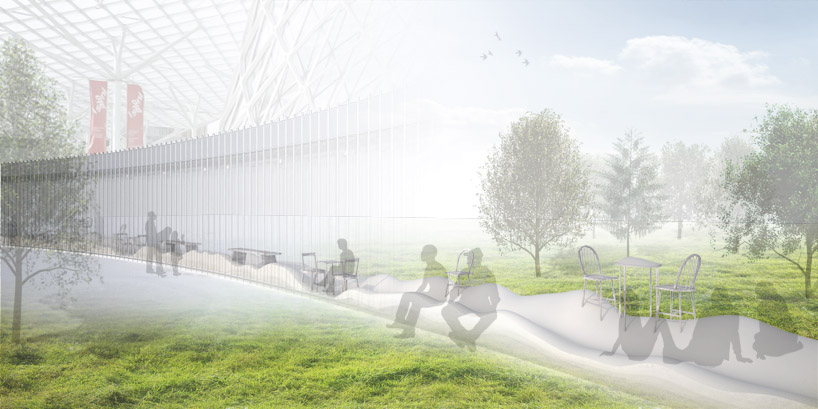 transition from environmental space to monument-like park
transition from environmental space to monument-like park 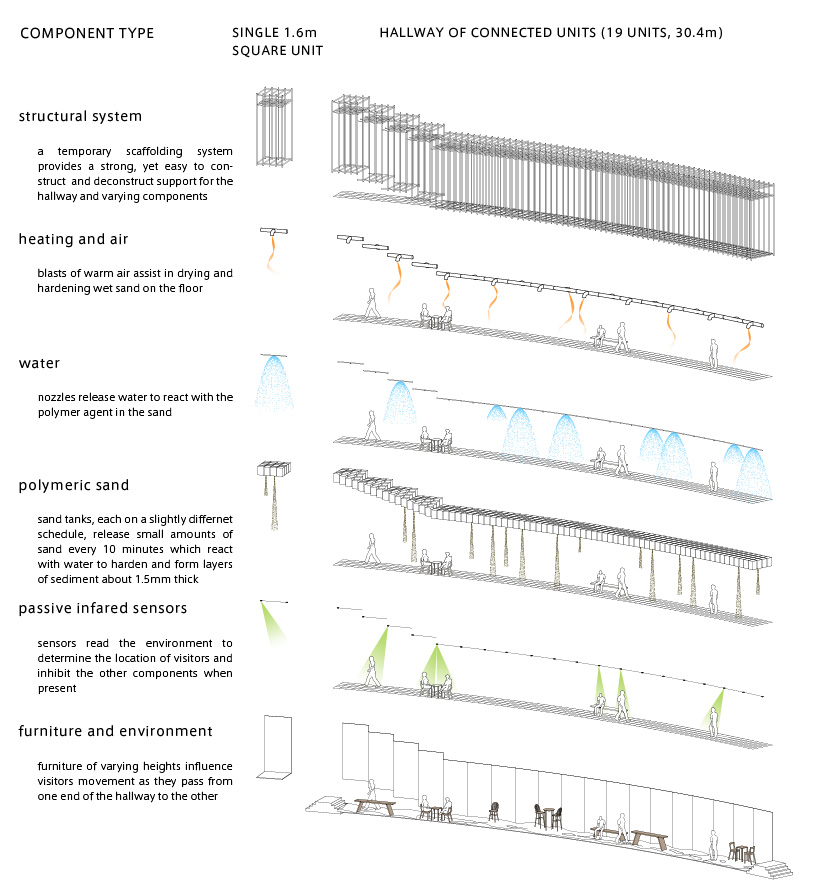 component and system breakdown of “Monument to the Ages”
component and system breakdown of “Monument to the Ages” 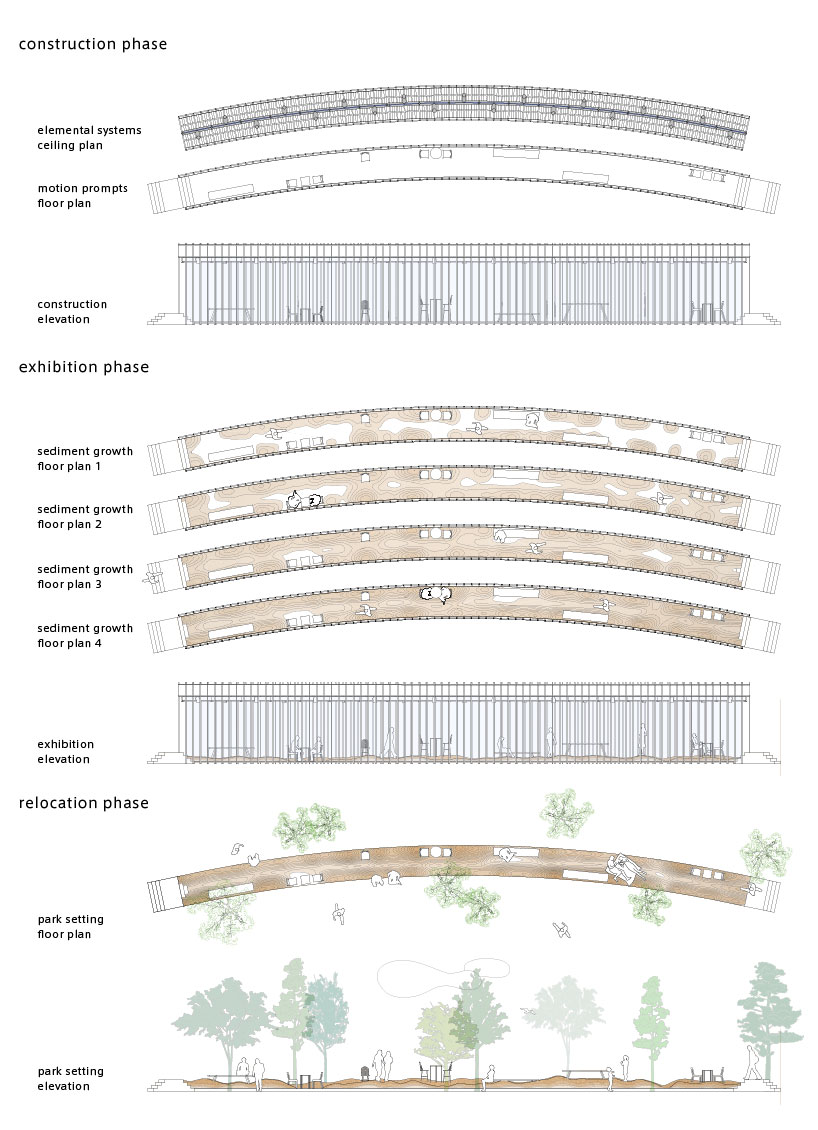 plans and elevations of the various phases of “Monument to the Ages”
plans and elevations of the various phases of “Monument to the Ages” 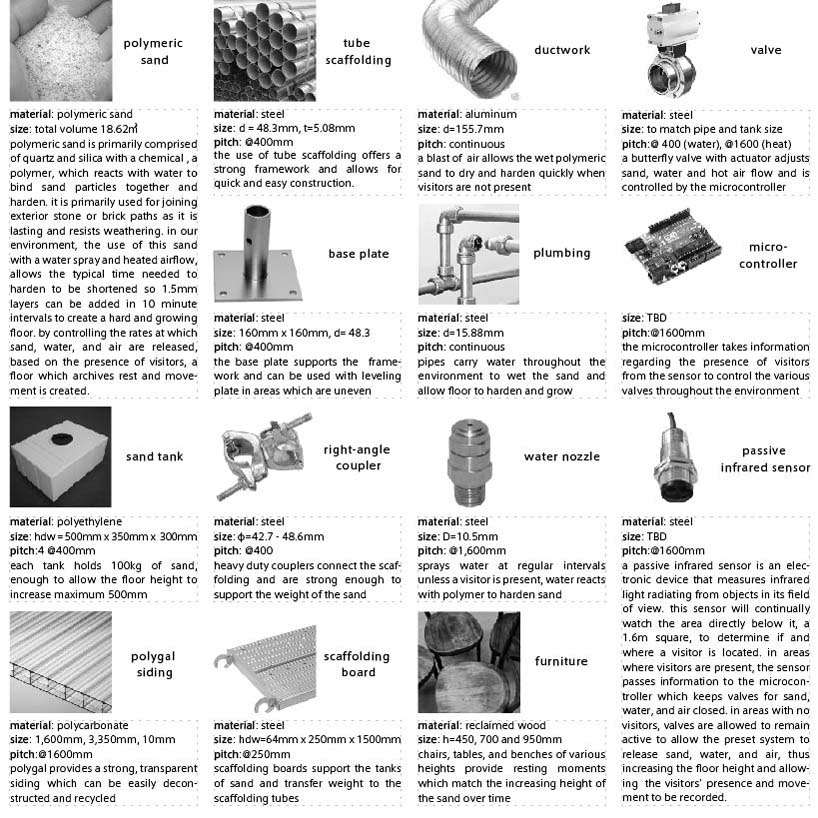 material specifications of “Monument to the Ages”
material specifications of “Monument to the Ages”